Late last year I started using Zoho CRM and Zoho Invoicing for my photography business. I signed up with Zoho One after the trial period, as that seemed like the most economical route. There were several more apps that I wanted to try out. Since then, I have gradually transitioned my workflow from other apps into Zoho One.
Prior to Zoho, I was using the free HubSpot CRM, Paid HubSpot email tracking, Quicken, and QuickBooks online, along with several other specific purpose apps. I was about to jump feet first into moving everything from Quicken to QuickBooks, but there were several things that bothered me that I wanted to address first.
Pain Point #1 – HubSpot CRM
The primary pain point for me was HubSpot. The HubSpot CRM was pretty cool with the email tracking and Chrome extension, but there was no sync with Google Contacts. HubSpot kept pointing to PieSync as a solution, but the database from HubSpot did not line up very well with Google Contacts, plus PieSync was something I did not want to pay for. I attempted to use Zapier and IFTTT integrations, but neither worked 100%.
With HubSpot, the setup for Companies was based on a single email, so if that email changed, there had to be a new company record. You also could not have more than one email per company, and my data was starting to get corrupted between HubSpot and Google Contacts.
Pain Point #2 – Duplicate Data Entry
I was frustrated with the multiple entry of customer data between QuickBooks, Quicken, PayPal, CRM, and Google Contacts. There was a lack of visibility between customer CRM data and invoicing. I always felt like I was chasing data and missing things. I really wanted integration between CRM data, emails, and invoicing.
Pain Point #3 – Lack of Invoicing Flexibility
The interface with Self Employed QuickBooks online seemed half baked compared to Quicken. I could not add attachments, or any type of automation to invoices like I could in PayPal which I needed/wanted for license agreements and download links. The only positive thing was the free ACH payments feature. I knew I wanted an online invoicing and hoped the full QuickBooks would simplify the issues, but QuickBooks was not going to eliminate PayPal payments which several of my clients preferred.
One Minor Point
The mileage tracker for QuickBooks was just not as robust and dependable as the Triplog one. I was not going to save on the Triplog cost annually by using the QuickBooks one.
CRM – Invoicing Search
So, I set out to find a CRM which would sync with Google Contacts and tie to Customer Invoicing which would then link to QuickBooks. Zoho seemed to be the best choice after looking at a number of all-in-one options. It just seemed the most complete with very competitive pricing.
Zoho CRM quickly became central to my business workflow. I originally planned to use just Zoho Invoice which will export to QuickBooks, but as I got into Zoho more I began looking at Zoho Finance / Zoho Books instead. I prefer how Zoho Books handles payments. It can connect with complex bank logins which I continued to have trouble with in Quicken, and did not want to waste time if the same issues existed in QuickBooks. I never went through with implementing QuickBooks desktop, which I actually purchased over a year ago. I have been using Zoho Books for the last 6 months, and I am finally ready to fully migrate from Quicken/QuickBooks.
The Zoho One Apps I Use
Zoho One is a dizzying array of over 40 apps that covers just about everything. Some are good, and some so-so. Here are the apps that I currently use:
Apps I am Using Heavily
Zoho CRM – Leads, Contacts and Project Tracking with Deals. This is the center of my workflow now for everything. I sync my Google Calendar, Emails, and Contacts with Zoho CRM. This data is then available to the other Zoho apps via Zoho CRM. I can see invoices, emails, and projects all within the Zoho CRM.
Zoho Sales IQ – Website Visitor Tracking, and Leads Capture. I love knowing when someone is on my website. I like following their page views, and am available for chat via my cellphone or desktop.
Zoho Books – Invoices + Estimates. This has been great. Customers can pay via PayPal, or credit card (via Stripe), or via bank transfer. I send out automatic reminders, and have automated replies set up to deliver download links after the client pays. This has simplified my life greatly.
Zoho Flow – This is the behind the scenes tool for automating things like download links after invoice payment
Apps I am Using Occasionally or Implementing
Zoho Projects – For jobs that are a bit more complex, or where I want to do time tracking I create a project directly from Zoho CRM DEALS module. I have project templates already set up for project types. I like to occasionally track my time to see how long it is taking me to do specific tasks, and this tool makes that more visible. I have a general Project that captures time on administrative/marketing tasks as well.
Zoho Expense – For specific expenses associated with Deals/Shoots, I use this to track receipts, and out of pocket expenses. Once I fully transition to Zoho Books, I will use this module more consistently.
Zoho Campaign – I have run a couple of email campaigns through this module, and it seems solid. It will not accept generic emails like info@ or sales@, so I had to follow up on those separately. I do most of my sales via cold calling and referrals, so this has limited use for me.
Zoho Bookings – Simple app, but looks useful for training session sign ups. The interface is blocky, but has some potential. I am currently using it on this website for signing up to training sessions.
Zoho Creator – To create forms/documents for online signature. I have used this to create my first online documents, but I need to spend more time here to get everything fine tuned, and transition my other documents to Zoho.
Zoho Forms + Zoho Sign – For online contracts. I have been using a WordPress Plugin for this, but I am currently using the Estimate to get approval for a project, and then turn that into an invoice. The Terms section in Zoho Invoices only allows for 1 version for all invoice templates. These terms need to change for different project types, and I do not like having to change them for each invoice. For more complex contracts, I am working on setting these up in Zoho. I currently have a Model release form and an Event Contract, and use the Estimate approval process for the rest.
Zoho Analytics – You can pull data from anywhere in Zoho with a bit of work. I set up a custom report to pull my sales data exactly how I need to report it for my State Sales Tax. Once I understand how to manage the tables, the reports are pretty easy to get what I want.
Zoho Social – I have been using Tailwind to schedule my Instagram posts, but I plan to test out Zoho Social before I pay my next annual bill for Tailwind.
Several Zoho Mobile Apps I Use
These apps are available on iOS and Android. I mostly use the Android ones.
Zoho CRM – Phone call logging, Checking in at appointments, adding notes to Leads, Contact, and deals. There is not any ability to change how the apps display on the mobile app like in the desktop version, but my custom fields show up where I need them.
Zoho Books – Invoice notifications, Creating invoices or lookup of estimates/invoices on the go.
Zoho Expense – Scanning receipts and entering data for shoot expenses. It has mileage tracking too, but I have not tested it.
Zoho Card Scanner – Not as robust as ContactsPlus transcribing service, but good enough to where I do not pay for ContactsPlus anymore. I have been disappointed in the quality from ContactsPlus recently as well.
Zoho Sales IQ – Online Chat and notifications of online visitors right on my phone.
Zoho Project – Time tracking by task and project. I love this feature!
Zoho Forms – Model and Property Releases for now, but plan to add more.
Other Non-Zoho Apps I still use
HubSpot Sales – I am still a Legacy Power User with HubSpot. I have not found an email tracker that works as well. I like the notifications I get on the desktop, and the level of information I get from the clicks and views to track my email.
TripLog – I am still using Triplog for my mileage tracking. I started using the USB GPS with it, and my mileage tracking is effortless, and easy to pick between business and personal miles. I have not tried the mileage tracking Zoho Expense.
PieSync – I did not want to use PieSync, but Zoho only syncs with Google every 24 hours. I wanted syncing to be immediate, so I am paying for PieSync after all. PieSync does a great job in the background. It is so much better than the other work around with Zapier or IFTTT.
G-Suite – Zoho could replace the full G-Suite with Zoho apps, but I am still hardwired to Google gmail, calendar, and Drive. Gmail has more extensions, and I feel is more deliverable than other email services. I have many different email address, and they all funnel into my G-Suite account for business ones, and a standard Gmail account for my personal ones.
So there you have what I use from Zoho One. I am very happy with my selection, and do not feel a need to change from this direction. There are some limitations in the software, just as any other system. It is just a matter of finding a reasonable workaround. As I go through the transition from Quicken/QuickBooks to Zoho Books, I will share some more of my thoughts here.


I am also a Legacy Power User with Hubspot – haven’t used it in a long time (still paying lol), I can’t figure out what features are available to me. I even contacted them and they weren’t straightforward about it. As a legacy power user, do you have the scoop on it? Thanks for any insight!